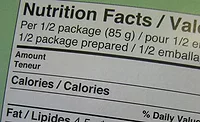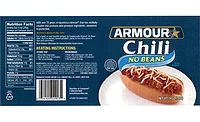TECH FLASH
More than some like it hot
NPD Group research reveals 56 percent of US households keep a bottle of hot sauce in their kitchens.
There’s never been a hotter time for the food industry to jump on the hot sauce bandwagon, as 56 percent of US households report keeping a bottle on hand in their kitchens, according to new research from market analyst, the NPD Group. And the increased consumption isn’t limited to inside the home either; foodservice distributors report shipments to restaurants and other service outlets have increased by double digits in the past two years, according to the researchers.
“Hot sauce is clearly part of the diet of many US consumers, and it’s a food that crosses gender, age, ethnicity and income,” says Annie Roberts, vice president, NPD SupplyTrack. “Hot or pepper sauce is a large seasoning category, and for foodservice manufacturers and operators, it’s about understanding the category’s share, where the category is growing and where it isn’t, and from which other categories it’s stealing share.”
In terms of favorites, NPD says the classic Louisiana-style (think Tabasco) hot sauce leads the way in terms of the volume of cases shipped. However, researchers say this growth has tapered because of the wide variety of choices consumers now have in sauces.
Specifically, one flavor of hot sauce that grew last year was habanero, particularly habanero sauces that paired with fruit flavors such as mango. These sauces saw triple-digit growth in 2014. Chipotle flavors also performed well last year.
While hot sauce is big business across the board, Sriracha, an Asian sauce relatively new to the average American’s palate, is stocked in 9 percent of all US households and in 16 percent of homes headed by someone aged 35 or younger, according to NPD.
You don’t have to look far to see the Sriracha influence in markets across the country. Recently Rogue Ales & Spirits brewed a Sriracha-inspired stout. But the brewery is just one of many companies that incorporate the tastes of savory items in products such as jerky, crackers and pretzels, and sauces and sweets like mustard, ketchup and chocolate.
When it comes to which Americans favor hot sauce, females aged 18 to 44 and 55 to 64 and males aged 18 to 54 and 65 plus eat more than the average amount over the course of a year, according to NPD’s ongoing food and beverage market research. Consumers living in dual-income, no kids households eat more hot sauce than any other lifecycle, while consumers living in the South eat more than any other region.
According to NPD, the science behind why consumers crave a little spice in their lives is traced to capsaicin, a natural chemical responsible for the burning sensation associated with spicy foods. The capsaicin “sends a burning sensation from the nerve endings in the mouth to the brain,” NPD says. “The body defends itself against the pain sensation by secreting endorphins, natural painkillers that cause a physical rush, which is similar to a runner’s high.”
Looking for a reprint of this article?
From high-res PDFs to custom plaques, order your copy today!





